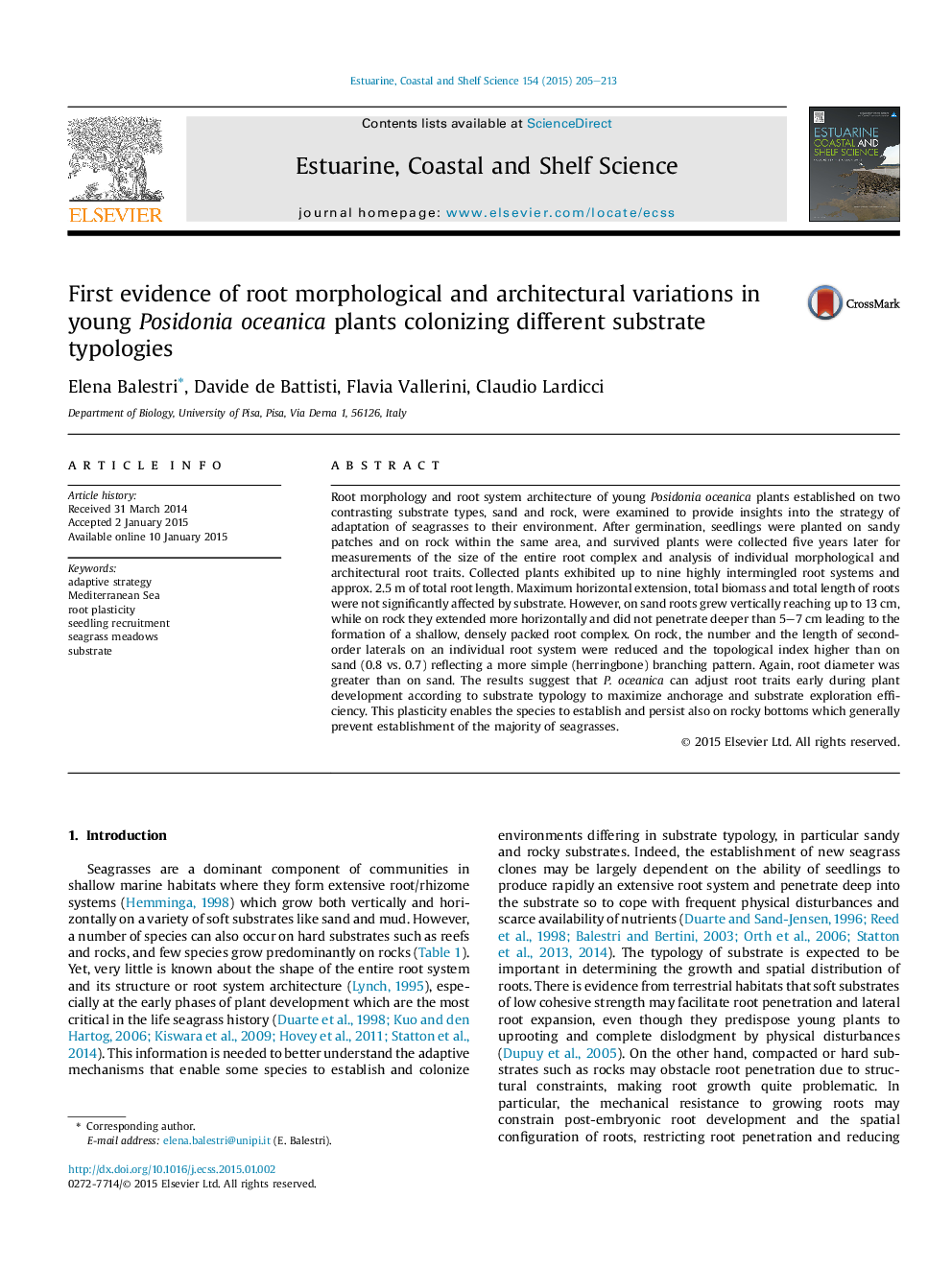| کد مقاله | کد نشریه | سال انتشار | مقاله انگلیسی | نسخه تمام متن |
|---|---|---|---|---|
| 4539528 | 1626642 | 2015 | 9 صفحه PDF | دانلود رایگان |

• Seedlings were grown on two substrate types (sand vs. rock) within the same area.
• Root morphology and root architecture were examined five years after planting.
• On rock root complex was shallow, densely packed with more herringbone structure.
• Biomass and total length of root systems were not affected by substrate type.
• Root plasticity enables the species to establish on contrasting substrate types.
Root morphology and root system architecture of young Posidonia oceanica plants established on two contrasting substrate types, sand and rock, were examined to provide insights into the strategy of adaptation of seagrasses to their environment. After germination, seedlings were planted on sandy patches and on rock within the same area, and survived plants were collected five years later for measurements of the size of the entire root complex and analysis of individual morphological and architectural root traits. Collected plants exhibited up to nine highly intermingled root systems and approx. 2.5 m of total root length. Maximum horizontal extension, total biomass and total length of roots were not significantly affected by substrate. However, on sand roots grew vertically reaching up to 13 cm, while on rock they extended more horizontally and did not penetrate deeper than 5–7 cm leading to the formation of a shallow, densely packed root complex. On rock, the number and the length of second-order laterals on an individual root system were reduced and the topological index higher than on sand (0.8 vs. 0.7) reflecting a more simple (herringbone) branching pattern. Again, root diameter was greater than on sand. The results suggest that P. oceanica can adjust root traits early during plant development according to substrate typology to maximize anchorage and substrate exploration efficiency. This plasticity enables the species to establish and persist also on rocky bottoms which generally prevent establishment of the majority of seagrasses.
Figure optionsDownload high-quality image (206 K)Download as PowerPoint slide
Journal: Estuarine, Coastal and Shelf Science - Volume 154, 5 March 2015, Pages 205–213